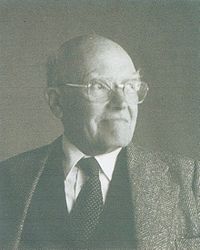Artigas, 1917 – Montevidéu (Uruguai), 2000
Por Roberto Segre The small scale, social homogeneity, and essentially urban character of Uruguay defined throughout the 20th century a sober, coherent architecture with few projections. The professionals who shaped the paths of the Modern Movement – Juan A. Scasso, Mauricio Cravotto, Julio Vilamajó, Román Fresnedo Siri, Mario Payssé Reyes, and others – assimilated stylistic trends from abroad, adapting them to local conditions and integrating them into the surrounding urban context. At the same time, the building speculation unleashed in the second half of the 20th century reached an acceptable architectural level that maintained the “human” and livable character of Montevideo.
The small scale, social homogeneity, and essentially urban character of Uruguay defined throughout the 20th century a sober, coherent architecture with few projections. The professionals who shaped the paths of the Modern Movement – Juan A. Scasso, Mauricio Cravotto, Julio Vilamajó, Román Fresnedo Siri, Mario Payssé Reyes, and others – assimilated stylistic trends from abroad, adapting them to local conditions and integrating them into the surrounding urban context. At the same time, the building speculation unleashed in the second half of the 20th century reached an acceptable architectural level that maintained the “human” and livable character of Montevideo.

The achieved balance between city and architecture and between aesthetics, technique, and function makes it unsurprising that the most well-known, valued, and internationally recognized figure for the creativity and sensitivity of his “architectural” work is an engineer. Graduated from the Faculty of Engineering of Montevideo in 1943, Eladio Dieste became interested in developing lightweight structures made with local materials, artisanal labor, and adapted to the limited available resources. Instead of favoring reinforced concrete, he studied the behavior of brick as a structural component, combined with steel, creating the “reinforced ceramics” system. Immediately, the lightness of the roof layers of warehouses, silos, storage facilities, and bus terminals astonished observers, as did the effects achieved with the natural lighting of the spaces. His first architectural work was the parish church of Cristo Obrero and Nuestra Señora de Lourdes, in Atlántida (1957–1958), whose sinuous, brick-covered walls create unprecedented spatiality and luminosity reminiscent of the experiences of Catalan architect Antonio Gaudí.
The climax of lightness—making it seem as if the walls and wrinkled ceiling were levitating—was reached in the church of San Pedro, in Durazno (1967–1971), whose brick rose window recalls the transparency of medieval stained glass. Starting with the TEM warehouse at the port of Montevideo (1962), his structures became increasingly daring until reaching a 14-meter span at the Salto bus terminal (1974) or a 47-meter unsupported span at the market in Porto Alegre, Brazil (1972), in collaboration with Maximiliano Fayet and Claudio Araújo. Finally, using the reinforced ceramics system, he built a lightweight 66-meter-high tower for the local television station in the city of Maldonado (1986). All these projects would have been impossible to carry out without the close collaboration between the engineer and the inventiveness of the workers who accompanied him in constructing his works. The admiration for the originality of his proposals was demonstrated by awards, international exhibitions, and publications: in 1990, he received recognition for his work at the Quito Biennial and the Gabriela Mistral Prize from the OAS. In 1991, the V SAL awarded him the America Prize in Santiago, Chile.



